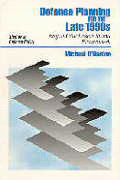How does the United States fashion a defense policy for a world in which it has no major enemies, strong and reliable allies, and the best military in history–and yet at the same time has a bevy of worries about its future security and a strong sense that the world is anything but safe and secure?
At a time when all of government is being asked to become more efficient, Michael O’Hanlon shows how the United States could prudently cut defense spending by as much as ten percent without risking its ability to respond to regional crises or maintain global commitments.
O’Hanlon summarizes the military doctrine and budgetary dimensions of the Clinton administration’s “Bottom-Up Review” plan for U.S. defense forces. He argues that U.S. strategists have not yet adjusted defense planning to the post-Soviet world and are focusing excessively, if somewhat understandably, on the vestiges of the cold war in places such as the Korean peninsula. He calls for western support of more innovative approaches to UN peace operations and a reorientation of the NATO alliance away from conflict with Russia and toward other combat scenarios.
Authors

